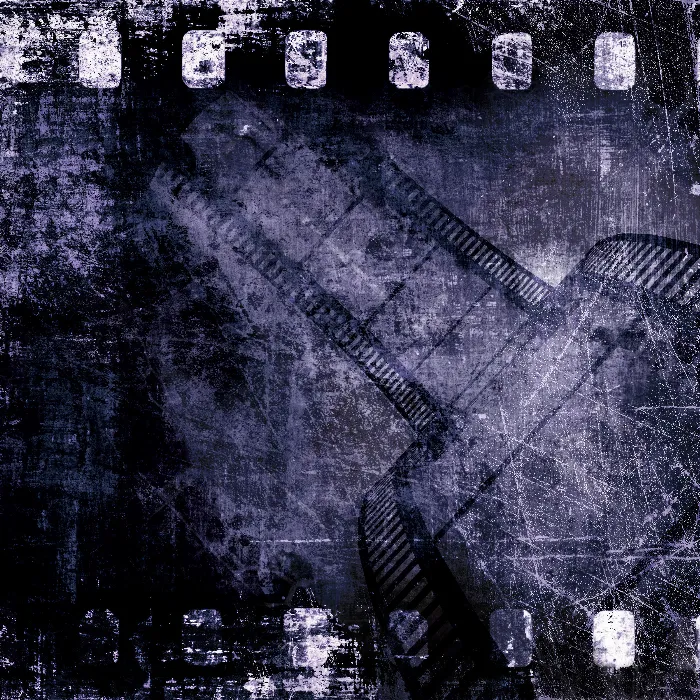Every creative process begins with a first step, and the world of After Effects is no exception. If you are new to the world of animation and video editing, getting started with After Effects may seem overwhelming. But don't worry! In this guide, I will introduce you to the basic elements of the user interface and guide you through the first steps to start your own project.
Main insights
- After Effects offers a variety of features for creating animations and effects.
- The user interface consists of different panels that you can customize.
- Importing files and creating compositions are essential steps when working in After Effects.
- With a structured folder organization, you can keep track of your projects.
Step-by-Step Guide
1. Starting After Effects
To use After Effects, you first need to open the program. After starting, you will see the welcome screen that offers you various options, such as opening a previous project or starting a new document. Here you can decide whether to start with a new composition or continue with an existing project.

2. Familiarize Yourself with the User Interface
Once After Effects is started, you will see the user interface made up of various panels. At the top is the toolbar, while the project window displays all imported files. You will also find the composition window, where your work is visualized. In addition to these elements, there is an effects panel that gives you access to all sorts of effects and animations.
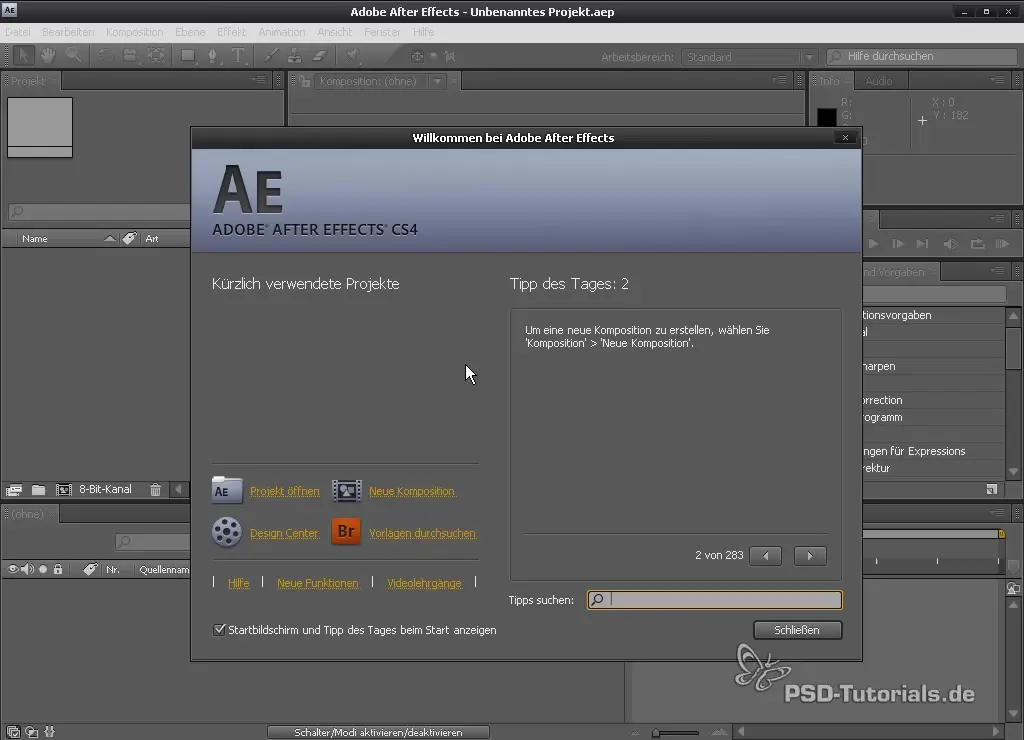
3. Importing Files
To start your project, you need to import files. This can be done in several ways: you can go to the “File” menu -> “Import”, right-click in the project window, or simply double-click directly in the project window. The easiest way is often the double-click, which opens the file browser where you can select your desired files.
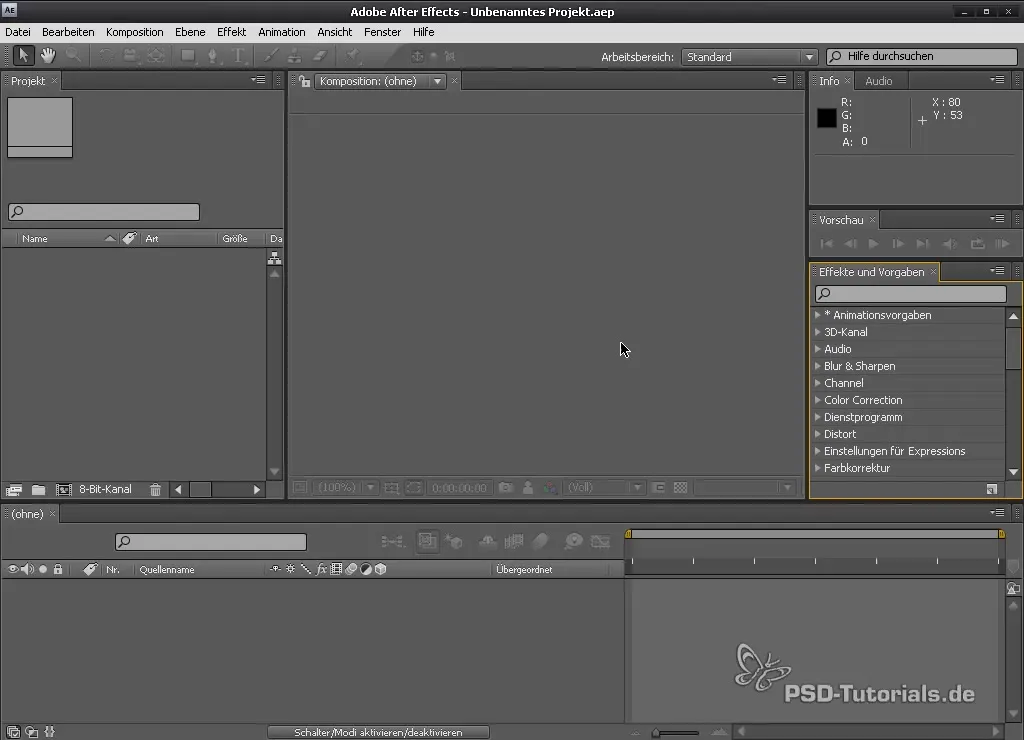
4. Creating a Folder Structure
To organize your files effectively, it's a good idea to create folders for different file types. Right-click in the project window and select “New Folder” to create a new folder. You can move your imported videos into a folder named “Videos” and place your images in a folder called “Images.”
5. Creating a Composition
To edit your clips, you need to create a new composition. This can also be done in several ways: via the “Composition” menu -> “New Composition”, by pressing “Ctrl + N”, or by simply dragging the desired footage into the composition window. Once you have created the composition, you should set the size and frame rate according to your material.
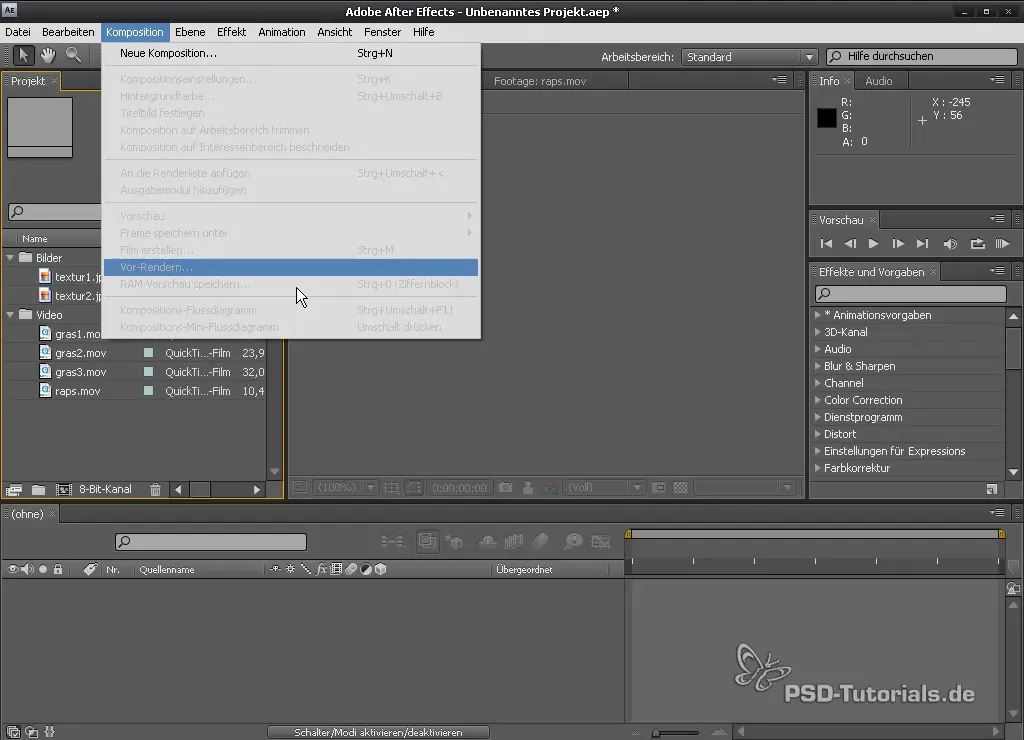
6. Editing Composition Settings
In the composition window, you can adjust the settings, such as name, preset, and duration. You can also choose the resolution, and it’s a good idea to adapt the settings to your project to achieve the best results.
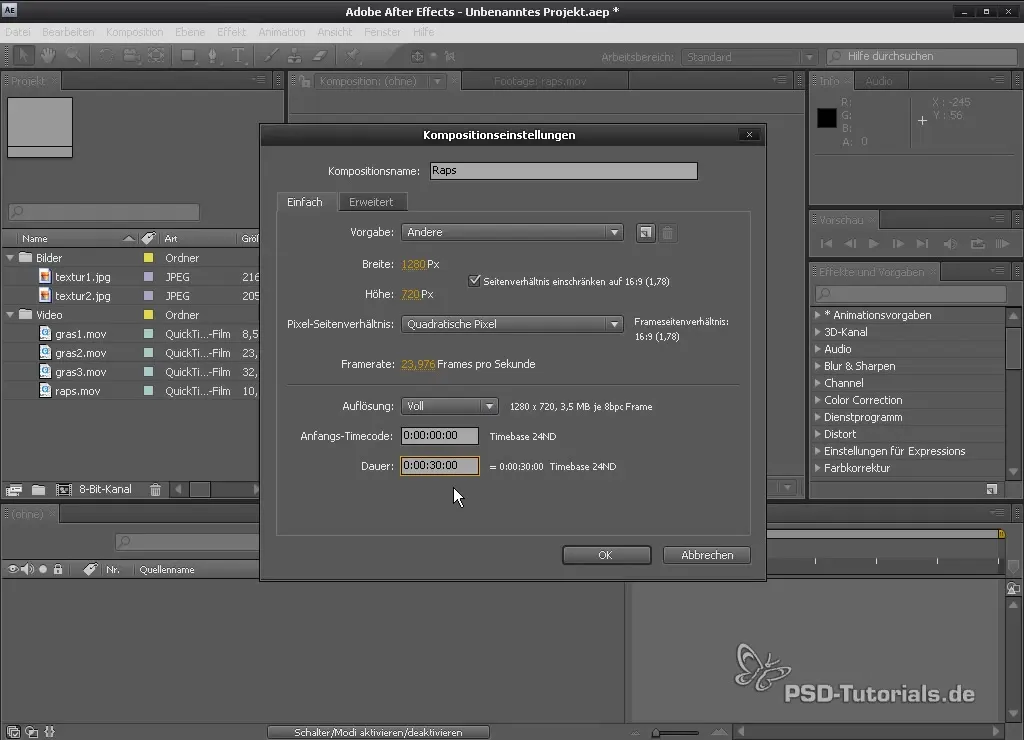
7. Dragging Footage into the Composition
Now that you have created a composition, you can drag your footage directly into the composition window. This will insert your media clip into the composition and make it ready for editing. The footage will appear in both the composition window and the timeline.
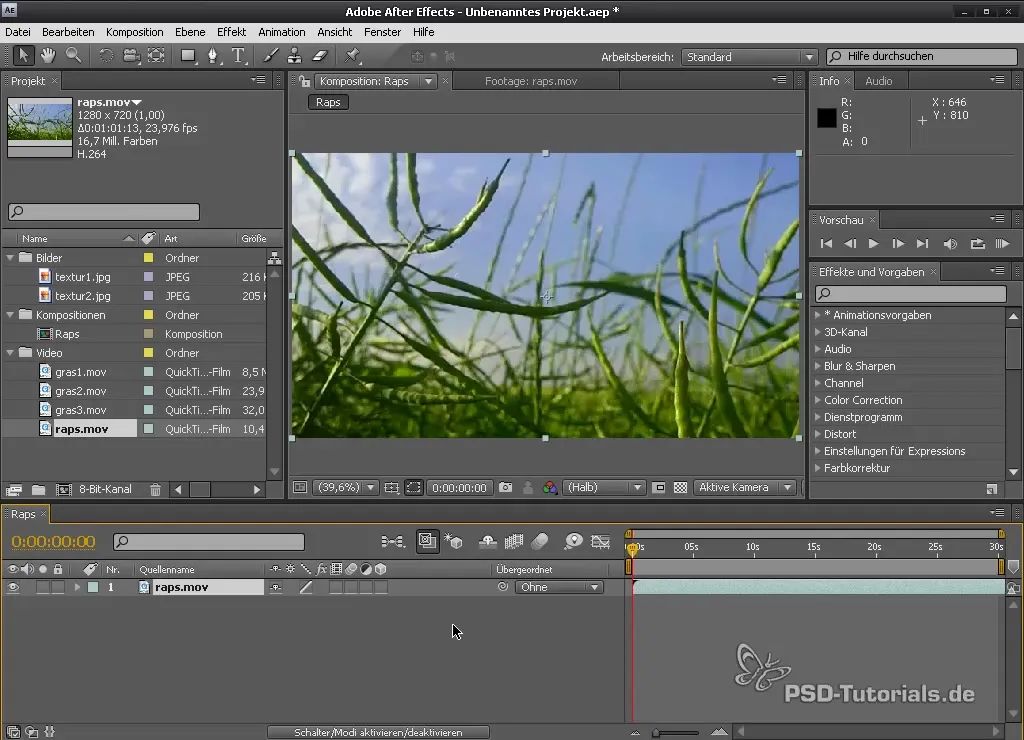
8. Utilizing Timeline Components
In the timeline, you can see your imported elements. You can change the duration of a layer by clicking on the edge of the layer and dragging it to change the length. If you want to make the composition shorter, you can also hold down the “Alt” key and move the edge of the layer.
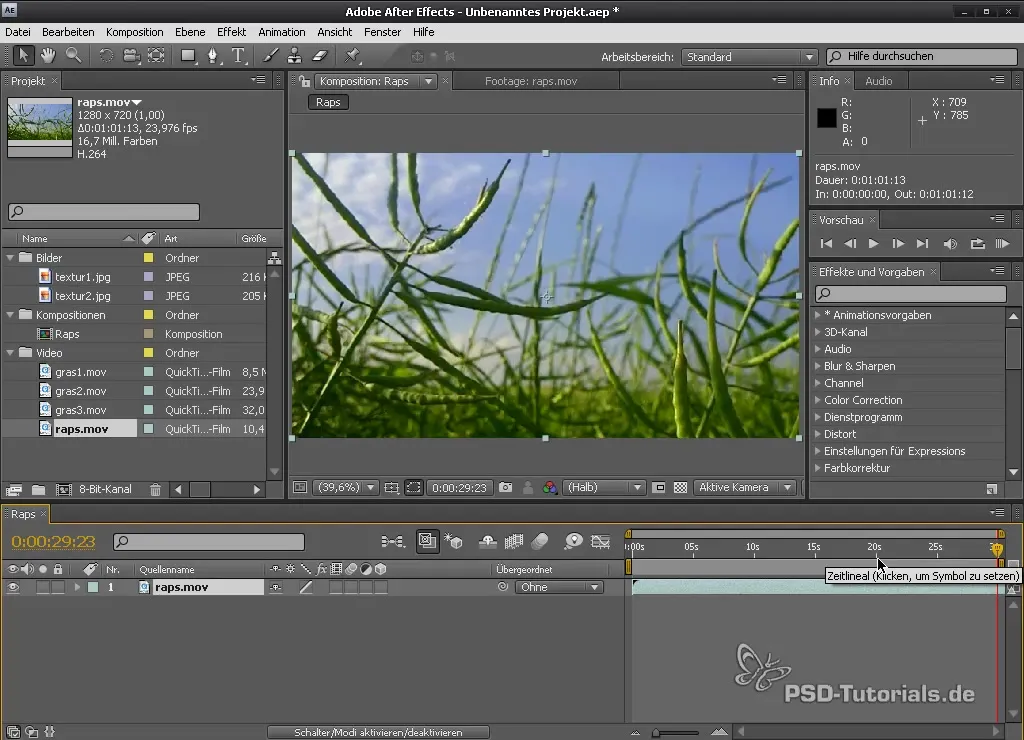
9. Composition Behavior
An important aspect of working with After Effects is understanding how your compositions behave. When you create the composition that you imported beforehand, it is set up with all the settings of your footage. This gives you control over the duration, frame rate, and aspect ratio.
10. Making the User Interface Customizable
After Effects allows you to customize the user interface to your liking. For example, you can resize, minimize, or move panels to create more space for the items you are currently working on. This significantly improves workflow and provides a pleasant working atmosphere.
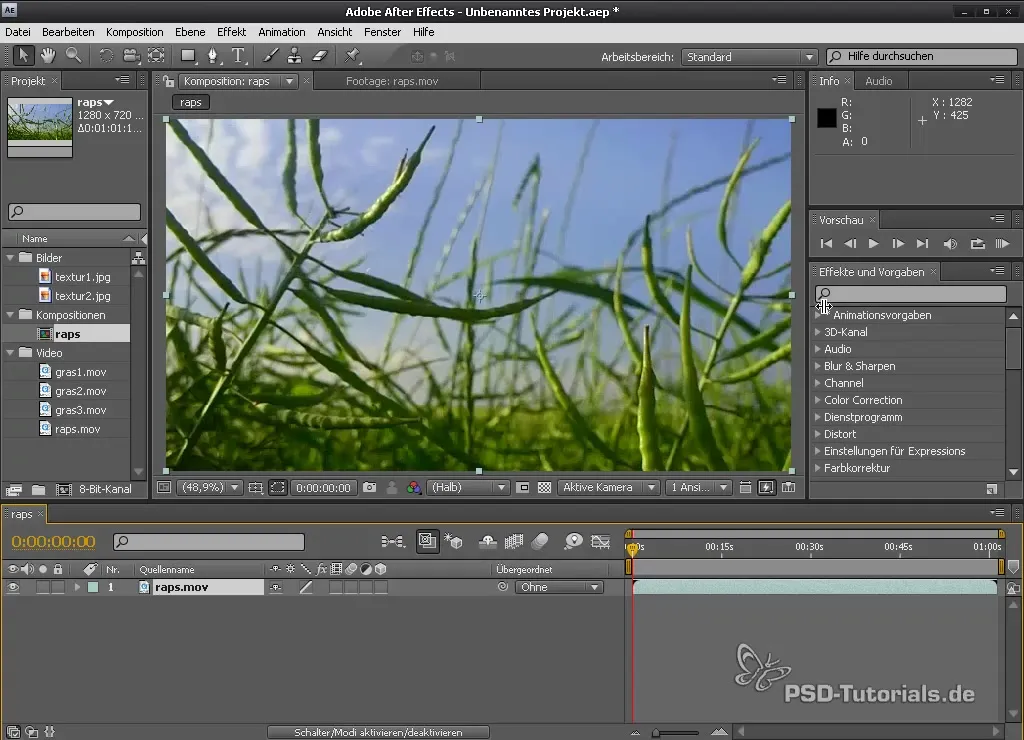
11. Using the Safe Title Area
In the composition, there is also the “safe title area.” This ensures that your titles remain within a certain area so they are not cut off by the image edge. Use this feature to make sure that text or important information in your project remains clearly visible.
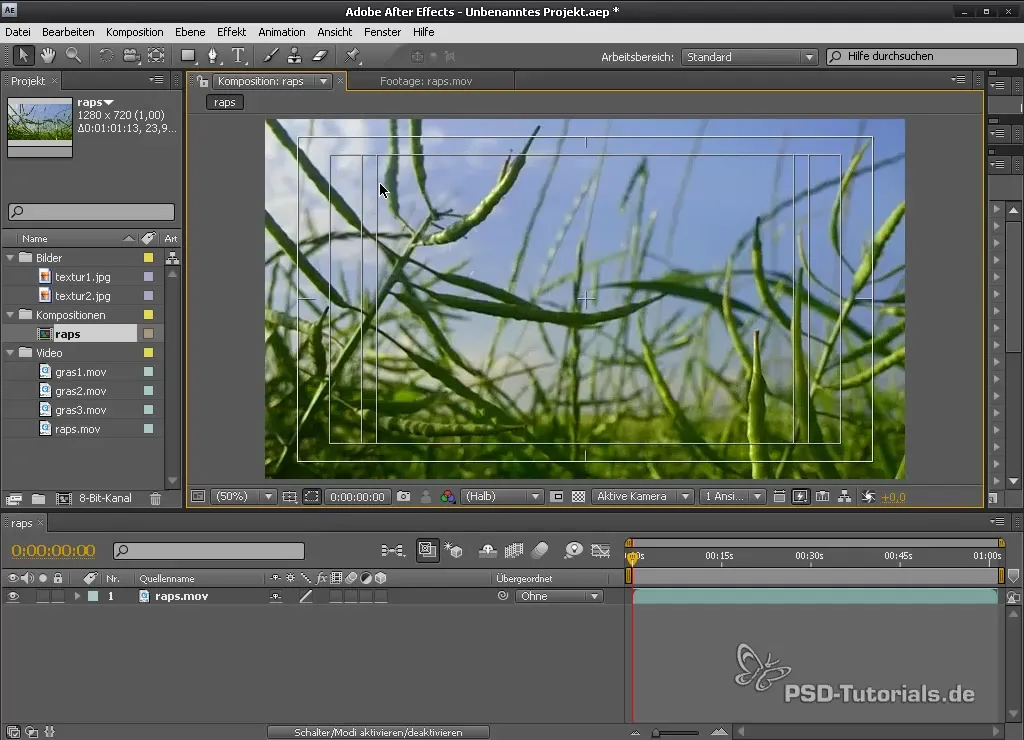
12. Multiview Options
When working with 3D scenes, you can switch to the multiview options when creating compositions. These allow you to visualize your settings in different ways and provide better clarity during work.
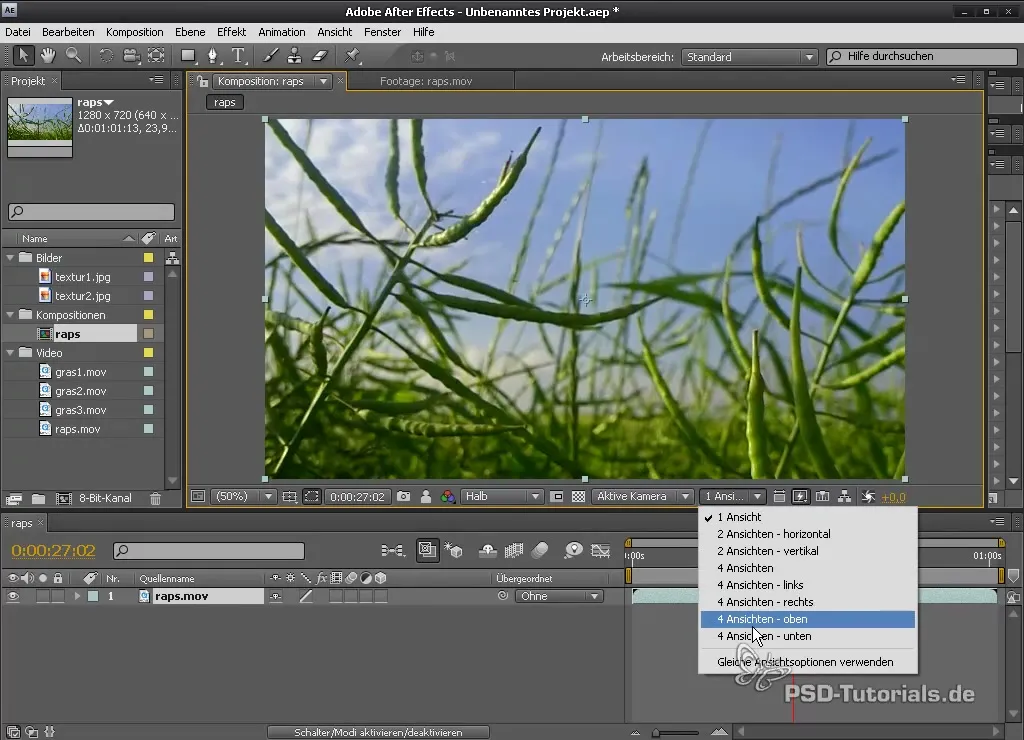
Summary - After Effects: User Interface and First Steps
In this guide, you have learned the various terms and basic functions of After Effects. You now know how to import files, create a composition, and customize the user interface.
Frequently Asked Questions
How do I import files into After Effects?You can import files through the “File” menu -> “Import” or by double-clicking in the project window.
What is a composition in After Effects?A composition is the space where you can edit, arrange, and animate your media clips.
How can I customize the user interface?You can move, resize, or minimize the panels in the user interface to have a better frontal view of your project.
Can multiple folders be created in a project?Yes, you can create many folders to better organize your projects and keep track of them.
